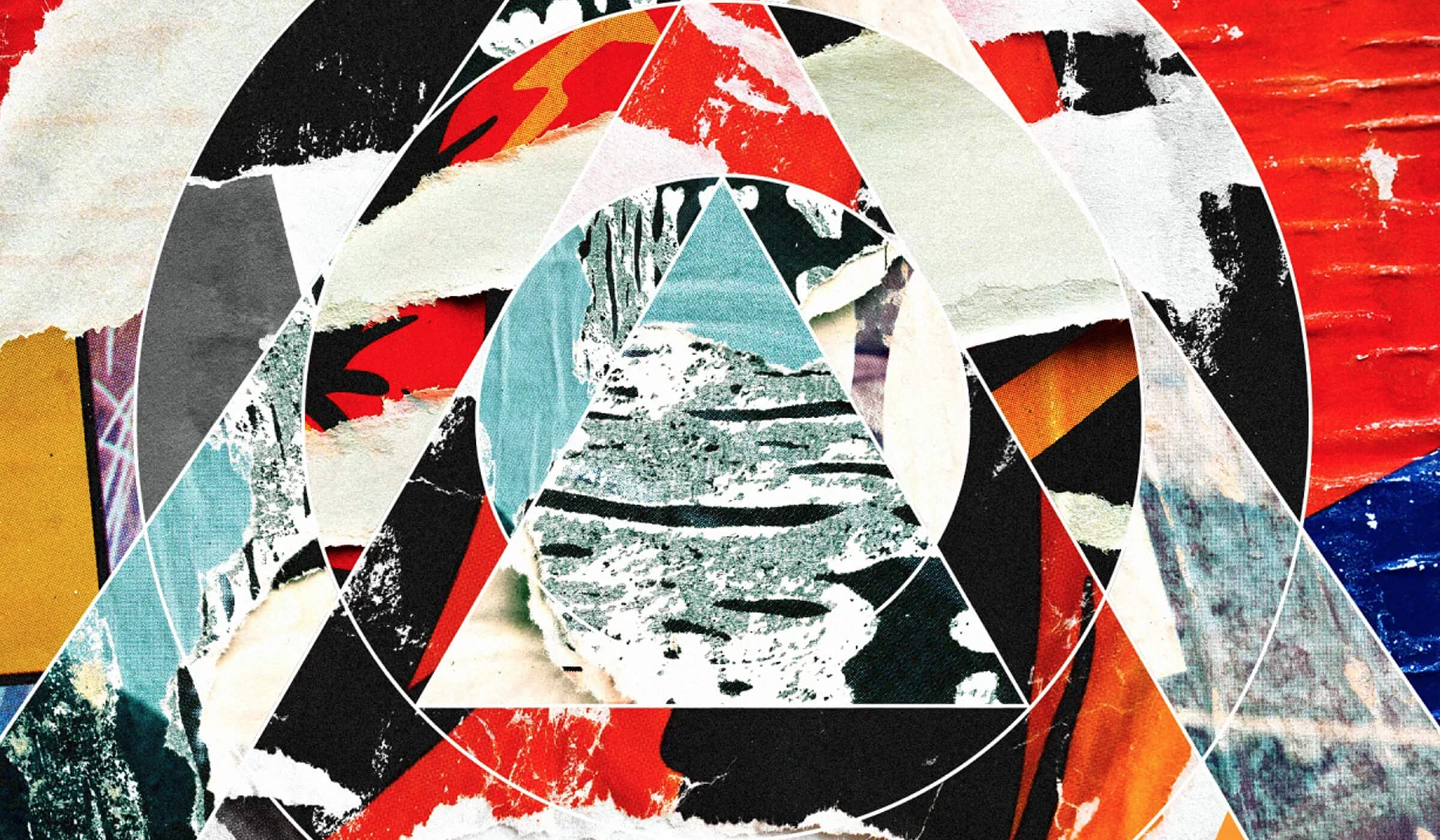Leaders at Microsoft, Google, Ideo, Pentagram, Gensler, and more weigh in.
By Mark Wilson
Everyone is overworked and unhappy. Digital platforms have sucked the last of our attention and sanity. If you read the headlines in 2018, you’d have every reason to feel pessimistic about the future.
But the design experts we talked to–from companies such as Microsoft, Google, Ideo, and Forrester–offer a glimmer of hope. As they look forward to 2019, they agree on one thing: The cold, corporate thinking that has defined the business world over the past several years doesn’t jive with how people want to live. In 2019, people will be more than mere data points; it’s a designer’s job to make sure of it. Here are nine key design predictions for 2019.
1. WE’LL FOCUS ON FOCUS
“Design has journeyed into uncharted territory. The impact of technology is more strongly felt than ever and at scales never seen before—some of it positive, but much of it negative. We’re distracted, depressed, and overwhelmed. The digital experiences that were once fun, delightful, and helpful now feel like a burden; an always-on state that we hope to escape.
“In 2019, I believe design needs to be the answer to that escape. We need to take a hard look in the mirror and hold ourselves accountable to the unintended consequences of rapid innovation. Do we need 1 million new apps a year? Do we need to design for constant engagement? Do we need to live in the corners of Dark UX? We do not. We need to be more intentional and design experiences that support cognitive sustainability for individuals, groups, and society. It’s time now for designers to take on this ethical responsibility. The biggest design trend will be a return to mindfulness and focus.” —Albert Shum, corporate VP of design, Microsoft
2. PEOPLE (AND PRODUCTS) WILL DO MORE WITH LESS
“Fueled by the recent IPCC special report, natural disasters demonstrating the severity of human-caused climate change, and a lack of action by the U.S. government, apparel brands and consumers will take action. Consumers will be more aware of the negative effects of overconsumption and more people will aim to reduce their wardrobes to fewer items. Brands will design better products and invest in sustainability and circularity. Patagonia and H&M are just two examples of that.
“Product design will become more conscious, and designers will design for quality and longevity, as opposed to trends. Consumer insights will be leveraged to design with the customer in mind from the get-go in order to reduce overproduction. A focus on functionality, comfort, and great design will provide garments with greater versatility. Apple has led the way in technology in simplifying products while increasing their performance, and similarly in fashion, companies will focus on simplicity and removing excess details, while increasing the poetry. Beautiful design will give customers a feeling of delight and joy for the fewer pieces they own. In spite of owning fewer things, individuals will do more, and so will the clothing they wear.” —Nina Faulhaber and Meg He, cofounders, ADAY
3. IOT WILL LEAVE THE HOUSE
“While cool IoT products continue to enter our homes, the dream of truly connected homes with products from fridges to lights talking to each other to make our lives more convenient, safe, and fun, remains just that—a dream. Engineering degrees are still required to make disparate products work together.
“In 2019, Forrester believes that IoT is poised to make a much bigger impact in our lives at work and around town, with 85% of companies implementing or planning to implement IoT solutions. Municipalities are already exploring how IoT solutions can make cities safer and more efficient by implementing connected lighting, parking systems, and even trash cans. Smart manufacturing helps companies increase their production levels while creating higher-quality products. Smarter supply chains will ensure there’s more visibility into where products are and if they’re in the correct condition—even helping ensure our food is safer. Devices ranging from elevators to turbines can signal when they need maintenance, before they break. The list goes on. IoT will continue to make an impact in nearly every industry including healthcare, retail, agriculture, and more. However, it is critical to address increased security risks driven by the fragmented array of connected devices, sensors, and infrastructure necessary to enable IoT solutions in enterprise, consumer, and city environments.” —Michele Pelino, analyst, Forrester
4. CITIES GET THE DATA
“We are living through the greatest period of urbanization, and demographic and climate changes in world history. More than 1 billion people will be added to global cities by 2030. Designers must rethink and reinvent how people experience every aspect of their lives and become a driving force behind resilient, more livable cities. While tech product and service companies have enjoyed huge successes, the same agility and investment have mostly eluded the built environment. This is about to change. According to a recent report from Re:Tech, investments in real estate technology by venture capital firms reached nearly $13 billion in 2017. New materials, mobility, robotics, sensors, AI, and data platforms will pave the way for new and agile design approaches. The next phase of architecture will shift from creating places that last, to designing user-centric, innovation-ready, and highly adaptive spaces that learn and change in real-time for continuous evolution, sustainability, and performance.” —Hans Neubert, global lead of digital experiences, Gensler
5. “COLD,” “EFFICIENT,” AND “MODERN” LOSE THEIR GRIP
“The often-simplistic love affair of the tech world with clean, simple, and emotionally subdued design is coming to a slow, yet clear end. Such formulaic serene Sameness is no longer a valid risk-averse strategy as more and more companies understand that brand building requires a distinguished aesthetic with an emotional point of view. The shift to more emotional, expressive design is even felt at the leadership of the tech world: be it Google hardware designers coalescing around a decidedly warmer, more human approach to personal electronics or the growth of Lyft, while adopting a playful visual language.” —Gadi Amit, founder, NewDealDesign
6. A RENAISSANCE OF BRAND EXPRESSION
“We’re in an era of a new kind of homogeneity enabled and amplified by data and AI. That is, the popular, the best-selling, the top–according to stats–get more popular, and the look of the most popular marginalizes all other expressions and creates a monolithic identity: from font choices, colors, illustrations, to photography. Think about everything from the ‘millennial pink’ that was in vogue to the recent trend of the ‘startup look’: hyper-clean, sans-serif fonts typed out—literally—as a logotype, placed on a solid-colored background with a silhouetted product shot. It’s kind of amusing and alarming to see that we ended up at a point where one look can be applied to anything, sell anything: luggage, toothbrush, shoes, cosmetics, pet products, lingerie, insurance. You name it.
“In 2018 we’ve seen a big comeback of the ’90s in fashion. It’s a kind of nostalgia but beneath the surface it’s a signal that people crave differences in expressions. Wildly different expressions. We will see that yearning for expressions evolve in all areas, especially in branding, which pretty much dominates the contemporary visual landscape. We will see designers go through an awakening and go back to a rich history of expressions in the pre-mobile era, and brands will have to learn how to tap into that genius part of designers: the part that is a human being.” —Natasha Jen, partner, Pentagram
7. POT GETS PERSONALIZED
“When markets adopt a new design- and user-centered approach, their evolution happens in ways that are both tangible and experiential. As consumers, we’ve come to expect more from the products we choose to bring into our lives, and that couldn’t be more true for cannabis. As the culture accepts it more broadly (and legislation legalizes it), cannabis will be elevated from High Times to high fashion—even the infamous pot leaf has been abandoned among logos and apparel. That’s to be expected.
“What’s particularly compelling about the future is how universal and highly personal it will be. Products will be tailored and formulated to your exact specifications based on lifestyle, usage, and even genetics. No two humans are exactly the same, and their cannabis-based solutions should be just as unique. Innovations like this will take the life-enhancing properties of the products to their greatest potential and deliver that experience right to your door on a weekly schedule.” —Scott Wilson, founder + CEO, Minimal, chief experience officer, Cresco Labs
8. SOFTWARE NUDGES US THE RIGHT AWAY
“In 2019, we’ll see new systems and language for discussing and measuring the impact of our work beyond the individual user, ensuring a more holistic approach. This includes choices that influence engagement and utility, but also taking into account the way people talk, share, and interact with one another (especially in their personal lives).
“Similar to how we learned that small tweaks in the designs of our applications—like the wording of notifications or the color of buttons—have led to significant usage changes, we’ll define and share a common understanding of a different set of nudges and patterns that extend beyond tech and into real life.
“Over the past year, design teams across the world have applied many learnings from research, which shows that people stay attached to devices due to fear of missing out. Building upon those insights, there will be development to improve people’s daily lives while also ensuring they can focus their attention on the people and interests that truly matter. Providing awareness-raising tools to support users will help promote an individual sense of wellbeing; empowering users to look up from their devices will have a positive impact on families, communities, and societies.” —Glen Murphy, director of UX, Google
9. DESIGN ACTS AS A HEALER
“We are living in era of uncertainty, our minds and bodies frayed by stress. You see it in the headlines everyday: Kids paralyzed by anxiety. Suicides by gun. Addiction to opioids. We live in the most technologically connected times, yet our rates of loneliness are increasing. If you dig deep, the common root is an absence of emotional and mental well-being.
“I’m not talking about the well-being that’s branded through luxury experiences, like wellness retreats. I’m talking about what Maslow missed at the very bottom of his hierarchy: that sense of inner well-being that is absolutely necessary for our survival as humans.
“What’s exciting about our moment now is that science has surfaced the myriad of ways we can cultivate emotional and mental well-being—all of which are new channels for design.
“Designing ways to get better sleep is a way of designing for resilience to stress and better ability to manage our emotions. Tackling loneliness and designing for meaningful social connection is also designing for a stronger immune system and brain protection. (Conversely, enabling chronic loneliness is as bad as smoking 15 cigarettes a day!) Designing ways to help people find their sense of purpose and meaning in life is an incredibly powerful way to design for healthier mind and bodies.
“More and more designers will realize their superpowers. You don’t have to have a doctor or nurse to help people. Designers are healers, too.” —Ann Kim, portfolio director, Ideo Cambridge


